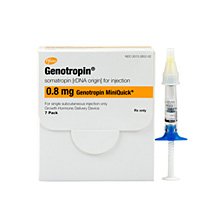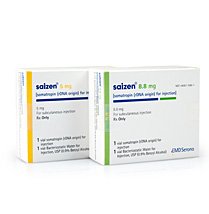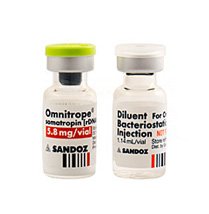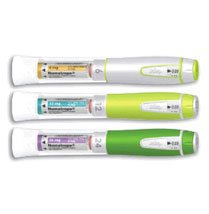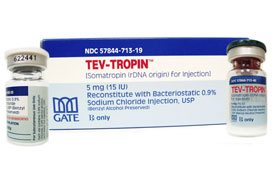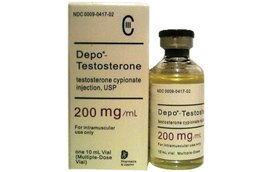Low Testosterone Levels in Men and Women: Causes, Symptoms, Long-Term Effects, Treatment

Testosterone levels vary considerably during the course of a person’s life, even during an average day. It can be challenging to identify low testosterone levels in men and women if testing is done later in the day when levels are typically lower than normal. Early morning testing of testosterone, while fasting, provides the best example of how much testosterone a man or woman’s body produces.
Why is it important to know if you have low testosterone levels?
Low T, also called testosterone deficiency or hypogonadism, can have potentially dangerous implications for the body in other ways. Testosterone helps to keep inflammation down, which is a factor in many health issues, including cardiovascular disease, atherosclerosis, obesity, type 2 diabetes, organ functions, and brain performance.
When looking at women’s testosterone levels, low numbers in blood test results can signal issues such as infertility, osteoporosis, sexual decline, menstrual irregularity, and hair loss.
Low testosterone levels for men have dire consequences for heart health, bone density, brain functions, and weight, just as with women.
There is no doubt that the adult body needs testosterone at every age. The question is how much, and then what to do when there is not enough testosterone to go around.
Low testosterone levels in men and women can lead to many more serious health issues as people age
Most Common Causes of Low Testosterone Levels in Men and Women
One of the most common yet often overlooked causes of low testosterone levels in men and women is aging. Some hormones, testosterone included, naturally decrease as we age. In males, testosterone levels begin a one to two percent decline per year somewhere in the mid-twenties. While women also experience a slow reduction, the most significant change comes during menopause, when the ovaries cease hormone production altogether.
Aside from the natural age-related decline, here are some of the other factors that can cause low testosterone levels in men:
- Testicular trauma or tumor
- Chemotherapy
- Tumor or treatment (surgery or radiation) of a tumor in the hypothalamus or pituitary gland
- Pituitary or hypothalamic dysfunction
- Certain types of chronic or acute illness
- Cirrhosis of the liver
- Renal failure
- Some medications, including opioids and steroids
- Hemochromatosis
- HIV/AIDS
- Klinefelter syndrome
- Kallmann syndrome
- Sarcoidosis
- Alcoholism or substance abuse
- Obesity
- Uncontrolled diabetes
- Excess estrogen
- Congenital defects
- Elevated prolactin levels
- Obstructive sleep apnea
Some of the causes of low testosterone levels in females are similar, especially obesity, excess estrogen, uncontrolled diabetes, and tumors. Other causes include:
- Menopause (early)
- Oophorectomy (surgical ovary removal)
- Birth control pills that alter hormone levels
- Ovarian cysts or tumors
- Adrenal tumor
- Excess exercise (female athletes often have altered hormone levels)
- Adrenal insufficiency
- Hypopituitarism
Symptoms of Low Testosterone Levels in Men and Women
Being able to identify the symptoms of low testosterone levels will make it easier to seek early medical intervention. The sooner you can treat low testosterone levels in women and men, the better and faster the results.
The most common symptoms of low levels of testosterone in males (most are the same for females) include:
- Weight gain
- Hair loss
- Muscle mass and strength decline
- Weak bones and joint pains
- Mood changes and depression
- Increased anxiety and stress
- Trouble concentrating or performing mental tasks
- Forgetfulness
- Low sex drive
- Anemia
- Poor sleep
- Lack of energy and endurance
- Low sperm count
- Reduced exercise capacity and results
- Erectile dysfunction
- Decreased motivation
- Lack of productivity
- Social isolation
Women with low testosterone levels experience many of the same symptoms, along with the following:
- Vaginal dryness
- Infertility
- Thinning or loss of hair
- Irregular menstrual cycle
- Missed periods
Many of the symptoms of low testosterone levels in men and women are similar
Low Testosterone Levels Charts – What Is Normal?
The testing of low testosterone levels in men and women can let you know if you fall into the low, high, or normal category. However, it takes more than assessing low free testosterone levels in men and women to know if you are testosterone deficient. The doctor will also look at total testosterone to determine how much testosterone the body produces.
What is the difference between total and free testosterone levels?
Total testosterone is how much testosterone your body makes and has in the bloodstream. Free testosterone is only the amount unattached to a protein molecule and readily available for the body’s androgen receptors to utilize. Testosterone travels attached to either sex hormone-binding globulin (SHBG) or albumin for transport through the blood to all parts of the body to enter into androgen receptors. Once it arrives at a receptor, the testosterone separates from the protein to enter the cell.
It is often necessary to test both free and total testosterone levels to determine if the problem is in production or the separation from the proteins. Another aspect of how to test for low testosterone levels is checking estrogen levels since the enzyme aromatase converts much of the free testosterone in the bloodstream into estradiol. Elevated estrogen and low testosterone could be a sign that too great a degree of testosterone conversion is occurring.
The following charts show normal and low levels of testosterone in females and males:
- Females
| Normal Female Testosterone Levels |
| Total Testosterone |
30 – 95 ng/dL |
| Free Testosterone |
0.3 – 1.9 ng/dL |
| Low Total Testosterone Levels in Women |
| Younger than 50 |
Less than 25 ng/dL |
| Older than 50 |
Less than 20 ng/dL |
- Males
| Normal Male Testosterone Levels |
| Age |
Normal Total Testosterone |
Average Total Testosterone |
Free Testosterone |
| 30 to 39 |
264 to 916 ng/dL |
600 to 675 ng/dL |
8.7 to 25.1 pg/mL |
| 40 to 49 |
235 to 929 ng/dL |
500 to 550 ng/dL |
6.8 to 21.5 pg/mL |
| 50 to 59 |
219 to 929 ng/dL |
400 to 450 ng/dL |
7.2 to 24.0 pg/mL |
| 60 and older |
218 to 929 ng/dL |
300 to 350 ng/dL |
6.6 to 18.1 pg/mL |
For males, anything below 300 ng/dL is considered low. However, doctors also consider symptoms when diagnosing low testosterone, so some men may have testosterone levels in the 400 range and still require testosterone therapy. As such, some men with much less than 300 ng/dL may have no symptoms and not require treatment.
Are There Long-Term Effects of Low Testosterone Levels in Men and Women?
One of the scariest factors about having low testosterone levels in men and women is not what a decline in testosterone alone will do, but more about the ramifications of what it can lead to if left unchecked.
The long-term effects of low testosterone levels in males and females include:
- Infertility
- Atherosclerosis
- Type 2 diabetes
- Cardiovascular disease
- Dementia
- Obesity
- Osteoporosis
- Metabolic syndrome
- High blood pressure
- Anemia
- Sexual inadequacy
These issues can alter the course of a person’s life – increasing mortality and morbidity risks, as well as a loss of independence and mobility.
Treatment for Low Testosterone Levels in Men and Women
As we start this explanation for how to treat low testosterone levels, we first want to point out that only people with Low T symptoms need to receive treatment. The absence of symptoms means that the body is naturally adjusting to the alterations in hormone levels. That is also why doctors go off more than just blood test results in diagnosing testosterone deficiency.
Treatment for low testosterone levels in men and women may include any of the following:
- Lifestyle changes:
- Adequate sleep (7 to 9 hours per night)
- Weight loss
- Stress reduction
- Increased exercise
- Intermittent fasting
- Dietary habits (cut back on sugar, fried, fatty, and processed foods)
- Testosterone replacement therapy
- Natural supplements
- DHEA
- Zinc
- Vitamin D
- D-Aspartic Acid
- Ginger
- Ashwagandha
Do not begin the use of natural supplements without first speaking with a hormone specialist who can assess your situation and determine what the best option will be.
The best type of treatment for low testosterone levels in males is injectable testosterone in the form of testosterone cypionate or enanthate. Some men may do best with a combination injection. The doctor will determine the right treatment following an assessment of medical testing and examination results.
Testosterone cream, compounded in the personalized strength, is often the best option for boosting low testosterone levels in women. Treatment with customized testosterone cream is safe and effective.
At Greenberg Health, our goal is to help men and women achieve their hormonal balance safely, effectively, and affordably. We begin with confidential telephone consultations at no charge. Contact us today for more information.
 Testosterone levels vary considerably during the course of a person’s life, even during an average day. It can be challenging to identify low testosterone levels in men and women if testing is done later in the day when levels are typically lower than normal. Early morning testing of testosterone, while fasting, provides the best example of how much testosterone a man or woman’s body produces.
Testosterone levels vary considerably during the course of a person’s life, even during an average day. It can be challenging to identify low testosterone levels in men and women if testing is done later in the day when levels are typically lower than normal. Early morning testing of testosterone, while fasting, provides the best example of how much testosterone a man or woman’s body produces.

















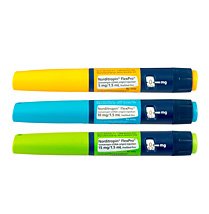
 Norditropin
Norditropin